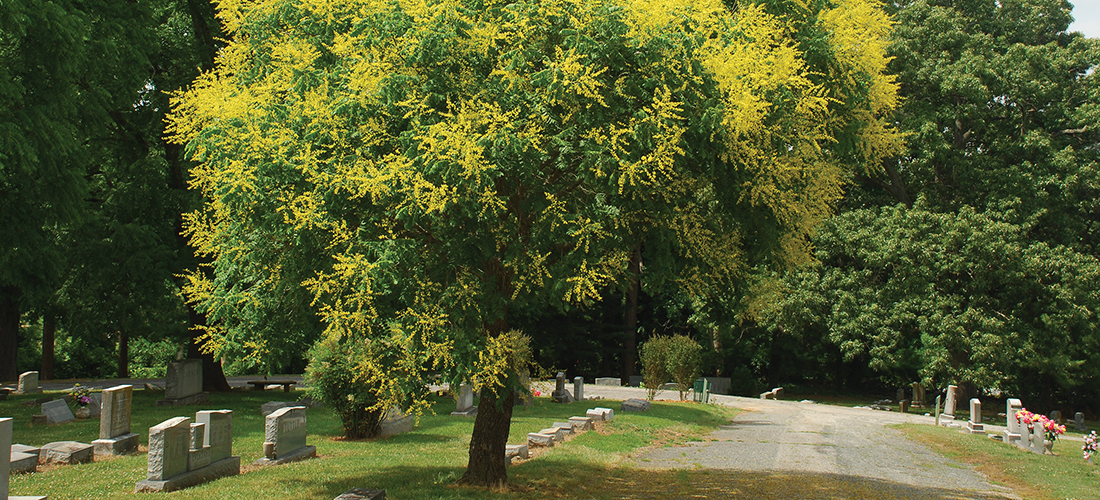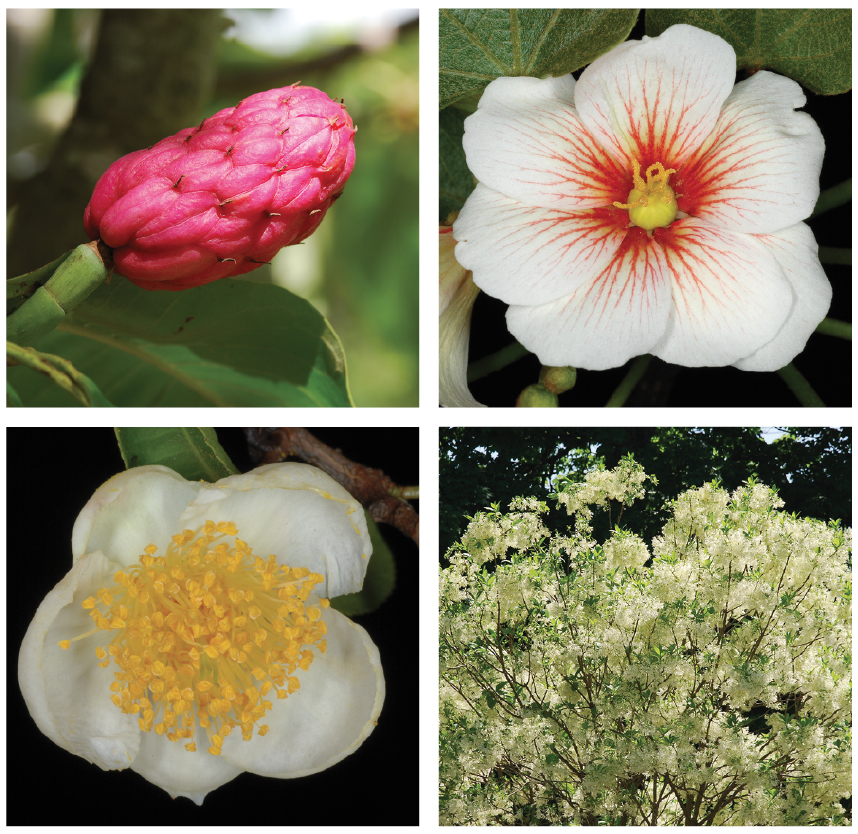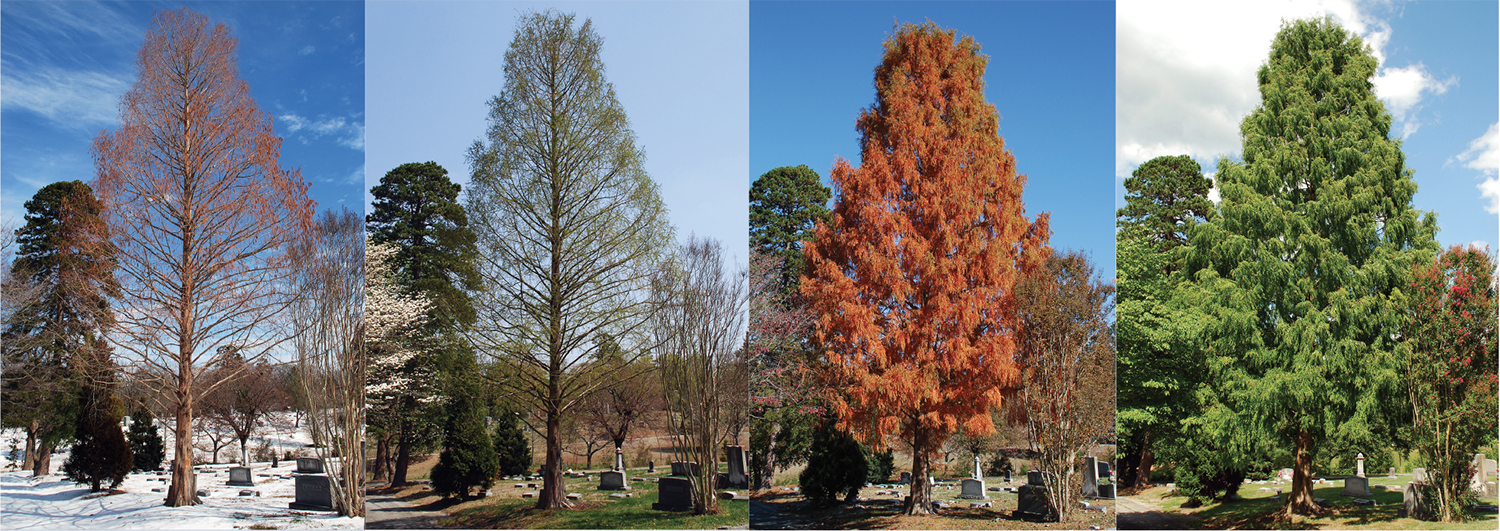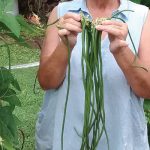

Men For All Seasons
Among the trees at Green Hill Cemetery, Doug Goldman picks up where Bill Craft left off
By Jim Dodson • Photographs by Doug Goldman
“I’ve spent a lot of time out here,” says Doug Goldman. “Though I frankly can’t tell you how much exactly because I’m always so focused when I’m walking these grounds, regardless the season. There are so many amazing trees. As a result, I can never walk in a straight line,” he continues. “I’m always discovering something new and wandering off to look closely at it.”
Goldman laughs, starting down a row of mature ginko trees that line one of the main entry lanes to historic Green Hill Cemetery. The trees, which are an ancient species, look to be very old but Goldman estimates they’re only 35 to 40 years old.
“They were planted by Bill Craft. This cemetery was his showplace. He didn’t keep records of his planting — entirely in his head,” says an incredulous Goldman. “Bill was obsessed with planting trees and shrubs. But trees and shrubs change over time. That’s why I got involved, to identify and make his legacy more accessible to people.”

Bill Craft was a successful Greensboro insurance man by trade, but an amateur plant impresario who placed the green in Greensboro by single-handedly landscaping many of the city’s notable urban spaces, parks and greenways. Craft passed away in 2010.
Doug Goldman, who never met the man he admires, is a youthful 49-year-old USDA botanist and plant expert with advanced degrees from Cornell and the University of Texas, a former research associate at Harvard and London’s Kew Gardens. Over the past half decade he got to know and identify more than 900 different trees and shrubs within Green Hill’s fairly modest 51 acres of land.
The cemetery is the oldest in the Gate City, a historic burying ground dating from 1877, laid out in a traditional “garden style” common to 19th century, one of three active cemeteries the City of Greensboro owns and looks after. Two others are Maplewood, the historically African-American cemetery off Gillespie Street in East Greensboro and Forest Lawn, adjacent to Guilford Courthouse National Military Park. A fourth cemetery, Union, off lower South Elm Street, is maintained by Cemetery Superintendent Mike Moye’s eight-man crew, but it is inactive.
“Mike and his crew do a good job of maintenance considering how thin they are spread compared to years ago,” says Goldman as he sets off with a visitor on a walking tour of Green Hill’s soulful rolling terrain, a postage stamp of bucolic beauty wedged between the Gate City’s oldest neighborhoods.
“Once upon a time in America,” he explains, “people thought of cemeteries as gardens, resting places where nature and man came together. Given tightening municipal budgets, the priorities of cities have really changed. Now the game is to keep up with maintenance.” Goldman surveys the cemetery’s well-kept grounds before picking up the thread. “That’s why I got involved to help the Friends of Green Hill and Mike and his staff identify what all is out there — and help preserve what is here. Some of it is quite surprising and rare,” he adds. “Like no place else I know of.”
Partnered with the volunteer Friends, funded by public donations and support from the Friends of Greensboro Parks and Recreation Foundation Goldman collected data, made photographs in all seasons and created a state-of-the-art app and map with a GPS plant-identification system that allows visitors, trees lovers and folks who simply crave the peacefulness of a historic green space to quickly identify any tree or shrub on the premises. Goldman also designed and personally tagged almost every tree and shrub with a unique plant-friendly identification system.
“What Doug did as an unpaid volunteer, entirely on his own, is really a great gift to the city,” says Mike Moye, “to people everywhere who love plants and trees. You can come here in any season and learn amazing things about trees and see species that have no reason to be growing here. That’s the legacy of Bill Craft with help from Doug Goldman.”
“This is a walker’s paradise and great gathering place for families to find solitude in the middle of the city,” echoes Ann Stringfield who gave her first walking tour of the cemetery 28 years ago. She points out that the gravestones of Green Hill bear the family names that grace just about every significant street and neighborhood in the city – Lindleys, Lathams, Richardsons, Bryans, Prices and even a certain C. Alphonso Smith, O.Henry’s early biographer.
Stringfield and Bill Craft’s son, David, formed the Friends of Green Hill Cemetery in 2009, a group of volunteers who periodically do light maintenance, look after the property, advocate for its maintenance and serve as roving ambassadors for the Gate City’s most historic burying ground.
“My father loved Green Hill. It was like a canvas for his restless desire to green the city,” adds David Craft, a self-described “amateur botanist” who learned much about nature by simply following in his indefatigable papa’s footsteps on his famous “guerilla” sorties to plant unique trees and shrubs throughout Greensboro — including scores of public parks, schools and spaces like Green Hill. “He just never sat still, read dozens of books on botany, and wildlife magazines and was always ordering unusual trees from nurseries near and far, planting them to see how they would grow.” Some didn’t take but many others thrived, he says, pausing. “That was Dad’s legacy. Fittingly, he sat down on a stone monument after giving a tour of Green Hill,” he recalls, “and had difficulty standing up. His exhaustion turned out to be leukemia. But I always thought how appropriate that he saw his own last days here in a place he loved — Green Hill,” says Craft, who continues the family tradition by working with Piedmont Legacy Trails, an organization that promotes trail advocacy.
Since the organization’s inception, Friends of Green Hill have funded benches for visitors and produced a 30-page walking tour of the historic grounds. They regularly give walking tours and PowerPoint programs to civic groups in the interest of expanding knowledge about one of the city’s least known assets. Ann Stringfield wryly refers to her own tour of Green Hill’s peaceful tree-sheltered lanes as “The Plants and the Planted,” emphasizing how the remarkable variety of trees make the property a natural sanctuary for personal remembrance, plant lovers, bird-watchers, walkers and wildlife.

“So many people drive by the gates and never realize what a treasure awaits in these grounds.”
That was even the case for Doug Goldman. He arrived in Greensboro eight years ago as one of three botanists assigned to the Regional Technical Support System for USDA’s Natural Resources Conservation Center, covering 22 states, Puerto Rico and much of the American West. Among the unit’s primary responsibilities is to gather detailed data on the life of trees and native shrubs, in a nutshell where and how they are growing in each section of the nation. Prior to arriving in Greensboro, Goldman worked as a research associate at Harvard where, among other things, historic Mount Auburn Cemetery in Cambridge was both a resource and inspiration to a man whose life is trees.
“Early in life I discovered that old cemeteries are really fine arboretums,” he says, explaining how he fell in love with trees “about age 7 or 8” when in the mid 1970s his parents bought a new house in a wooded section in Pittsford, New York, south of Rochester. “We were surrounded by the magnificent red oaks, so I set out to plant more red oaks on our lawn. I dug up trees from the woods and brought them home and planted them, including a vine that turned out to be poison ivy. Luckily I wasn’t allergic to it, but my mom and dad sure were. The oaks died but I was hooked on trees.”
The City of Rochester’s famous Mount Hope Cemetery (where Susan B. Anthony and Frederick Douglass are buried) became his open-air laboratory for studying mature and unusual species of trees.
Not surprisingly, it was the sight of unusual specimens of trees as he passed Green Hilll one day in 2014 that prompted Goldman to have a look inside the fences. “Quite honestly, I’d passed it dozens of times and never realized that it was an old cemetery. The leaves were off the trees and I saw several species of pines — a weeping pine in particular — that caught my attention.” Then he spotted a Needle palm in the valley and a turkey oak, and thought, “There’s no way that is naturally occurring. Something’s going on here.”
He investigated, met Ann Stringfield and David Craft, and eventually offered his scientific help to catalogue and help preserve the cemetery’s legacy via his electronic database and GPS system. “There were lots of great trees here but some were near the end of their life spans and others had been damaged by storms.” He remembered a beautiful elm back in his hometown that the city needlessly cut down after an ice storm. “At a time when cities everywhere are reducing their maintenance budgets, my hope was to remove trees that needed to go for the health of the property but prevent that sort of thing from happening at Green Hill.”
A walk with Doug Goldman is like being with a kid in a candy shop made of trees. His knowledge and enthusiasm are both infectious.
In the space of an hour, he showed off — and gave delightful mini-dissertations on — a rare blue jack oak specimen, a Kentucky coffee tree, longleaf pines, a magnificent pond pine, London plane trees, Amur cork tree, the largest Colorado blue spruce in the region, bald and Montezuma cypress, swamp tupelo, live oaks and sand pines native to Florida, plus a quaking aspen, big fig leaf magnolia, the aforementioned Turkey oak, lilac trees, Japanese cedar, catalpa and a genuine California redwood.
“You don’t have to go all the way to California to see a real redwood,” he quips, “though you probably should. They’re amazing. But if you want to save the time and money, you can just come to Green Hill and see a truly beautiful specimen.”
“This place really is Bill Craft’s legacy. I wish I’d known him,” Goldman reflects. “He was like a combination of my grandfather and myself, a man obsessed with trees. Bill planted so many of the trees here, species you won’t find any other place in this part of the country. That’s a great educational tool for anyone who shares our passion for nature. My job is to help protect the trees and expand exposure of what a wonderful place Green Hill is — in any season.” OH





